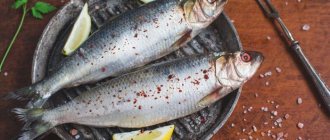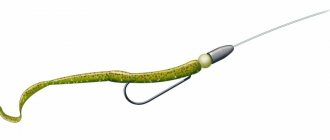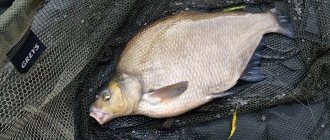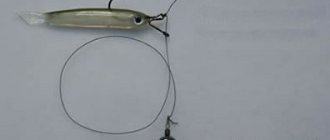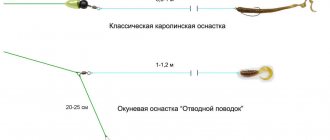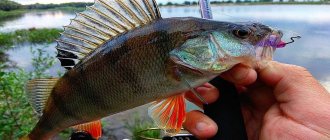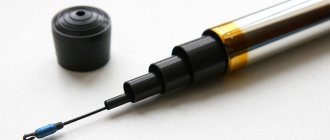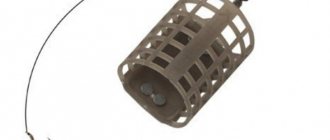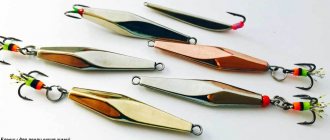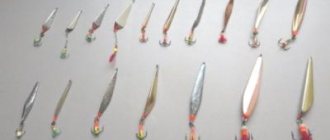For many fishermen, fishing is a hobby. Anglers are always accompanied by excitement, risk and adrenaline. After all, it’s fun to select gear, a place and start the “hunt”. During the spawning season, many fishermen easily find fishing spots and do not even have the opportunity to use their entire arsenal of gear.
During the herring spawning season, many river banks are occupied by herring “hunting” enthusiasts. At the beginning of May, hungry herring is not picky about what it eats and grabs everything it comes across.
The main place of residence of herring is the sea. But during spawning, as the most important moment in its life, this fish prefers to spend it in river water. With the beginning of warming and decreasing floods, in the spring, schools of herring swim into the mouth of the Volga. She goes against the current, up the river.
This fish is divided into two types: Caspian and Black Sea herring. Caspian herring comes to the Volga to spawn. After spawning, the fish can remain in the river until November. But it is no longer as fat as at the time of spawning, and therefore is of less interest.
Fishermen begin catching it at the mouth of the river with the March thaw and continue until the November frosts.
Features of herring fishing on the Volga
The Caspian herring begins its run at the end of May, when schools of this fish swim en masse into the mouth of the Volga. The shores at this time are dotted with local fishing enthusiasts. Herring swim in schools, are very hungry and try to grab everything in their path. Experienced fishermen, knowing this, catch it without even using bait for bait.
They most often use rubber bands for fishing. Fishermen attach many hooks to the fishing line. But using old-fashioned slips (the old name for “rubber bands with many spinners”) when fishing for herring is prohibited by law and is considered poaching.
It is allowed to catch herring with spinning rods and fishing rods, provided you have a license in hand.
Tackle for catching Don herring
Catching Don herring with a rubber band
Local fishermen most often catch Don herring using an elastic band that has a unique design.
This tackle is made from:
- aircraft model rubber band 6-7 meters long;
- there is a weight at the end of the shock absorber;
- To the opposite end, a main line of 0.35-0.5 millimeters and an insert with leads, the length of which is about 15 cm and a diameter of 0.3 mm, are attached to an elastic band.
The hook must be used with a long shank, onto which a piece of cambric is placed. Why is elastic used? Because with such gear it is possible to track the layers of water in which the herring moves. Mostly it occurs either in the upper layers or slightly lower; it is quite rare at the bottom.
It's not just herring that can be caught using a rubber band. They also catch sabrefish, which starts around May 15th. There are small fish, perch, pike and even catfish. True, such tackle is not very sporting; it is used for harvesting herring.
Catching Don herring with a spinning rod
One of the spinning anglers caught large Don herring well on the well-known “spinner” - Silver Creek. When using thin braid, a seven-gram “Silver” can be thrown quite far on a light coal spinning rod with a dough of up to 15-18g. After spawning, the herring begins to hunt on the surface of the water and catching it is much easier, although the so-called “runner” already loses its culinary qualities, but the pleasure from catching is no less enjoyable.
When does the herring run on the Volga begin?
The busy time for Volgograd fishermen begins in early May. For just a couple of weeks, herring spawning begins in the Volga River. According to fishermen, freshwater herring is almost no different from sea or ocean herring. From the very morning, a large number of fishermen gather on the concrete coast of the Volga River. A very good time for all fishing lovers.
They call herring – blackback, rabies, zal. But the most common name is still the Volga herring. For many fishermen, it is not the first time to go “hunting” with homemade gear. They make and buy tin, silver and brass spoons.
The herring began to be called zal for the reason that it does not fit in a barrel for pickling; its tail is broken or cut off.
Herring also has many useful, medicinal qualities, one of which is gastronomic. Herring contains approximately 25% fat, is well salted and has tasty meat.
The elastic band for catching herring is ready
What do we need
To make a bottom rubber band for catching herring, we will need an aircraft model rubber band with a round cross-section and an elongation coefficient of 1 to 4, 5 hooks No. 8-10, winding rings with a diameter of 0.5 mm, a round reel or a regular reel made of wood or plastic, a piece of fishing line 50 m long with a diameter of 0.4, a leader line with a diameter of 0.25 mm, large fasteners made of thick wire.
It also happens: Tackle for catching live bait
We will also need a cambric, which we will put on a loop with an elastic band, a meter-long piece of nylon rope and a small reel on which we will wind a fragment with hooks.
First we wind our fishing line onto the reel. Then we attach a winding ring to it and forget about it for a while. Now we need to make a separate fragment with hooks. To do this, we take a 3-meter piece of fishing line of the same diameter as the main one, 5-6 hooks and fishing line for leashes. We make leashes with hooks.
We will attach a rope with a weight to this loop. At one end of the rope we tie a carabiner, which we use to fasten it to the elastic band, and at the other we tie a sinker.
We make sure that the main line is always in a taut position. If the line sag, you may miss bites.
How to catch herring using a spinning rod?
Having permission to catch herring, you can take fishing gear and an inflatable boat and go fishing.
Suitable fishing gear:
- spinning rod with spoon;
- bottom fishing rod;
- an ordinary fishing rod with a float.
It is best to fish with a spinning rod on the river in a boat, throwing the spoon from different sides.
Such a check in different directions will make it possible to find a place with a jamb.
If you manage to get on a school of herring, then you need to pull out and throw the lure as quickly as possible, before the school swims away from you.
Fishermen use spinning rods of any structure and class.
Experienced fishermen clarify that the most optimal spinning rod for catching herring should have the following parameters: rod length no more than 4 meters with a rigid or semi-rigid action. It is good to use feeder rods.
You don’t have to get carried away by the very high price of spinning rods. For such fishing, there may be a more suitable type made of aluminum, with an inexpensive price. This type of spinning rod is good because it will serve you for a long time and has the necessary rigid structure for hooking and pulling out herring. An inertia reel would be a good choice.
The boat must be at least 100 meters away from land. Be sure to anchor the boat. When fishing from the shoreline, it is necessary to throw the spoon and fishing rod sinker into the river away from land. To do this, it is better to use a two-handed spinning rod with thin fishing line and a good reel.
A size 7-9 hook, half a centimeter fishing line, special herring lures and lead weights are very suitable for herring fishing. You can put a so-called “cambric” on the hook on the leash side from a regular white wire.
The spoon should be small and oblong with light weight. It must be secured with a leash under a sinker. It is advisable to have a leash of at least 0.5 m.
Equipment and bait for fishing
As mentioned above, the best gear for catching herring is a light spinning rod. And when it comes to bait, a heavy oscillating spoon with a triple hook at the end has no competition. Also no less popular are herring spoons (small, oscillating with a maximum length of 4 cm), which are loaded with lead weights. They are simple and inexpensive. You can make such a spoon yourself at home from a coffee lid or purchase it at any fishing tackle store.
The fly is another bait for herring. But you need to choose it carefully, taking a closer look at the local fauna. The choice should correspond to the insects that live in the place chosen for fishing.
In addition to spinning, anglers manage to catch herring using an elastic band . Catching it is always more effective and successful.
Next is a beautiful 30-minute video about catching herring on an ultralight spinning rod:
Tricks for finding a joint
Schools of herring constantly move from the shore to the middle of the river and back. It can swim almost on the surface, but sometimes it goes into the middle of the water column.
Usually, when the herring are spawning, many fishermen are close to each other. By the number of fish they pull out, you can immediately determine that a school has arrived, and you need to quickly start throwing gear and pulling out the fish. In this case, the main thing is not to miss the school of herring.
Herring fishing consists of two stages: searching and catching fish. The time spent waiting for the flock to approach is called searching.
Searching from a boat can be carried out using the following method:
- Throw the spoon and sinker into the water;
- Start countdown;
- Monitor the moment when the sinker touches the ground;
- When the bite begins to reel in the fishing line;
- Count until the fish comes out of the water.
In this way, the fisherman can determine the depth to the school. By the time another fisherman sees that the herring has been caught using this method and starts fishing, he will have already caught a lot of fish.
The principle of fishing from the shore is that you need to cast the lure as far as possible.
Fishing with a boat is much better and brings a larger catch than from the shore. The cost of a fishing license is correspondingly more expensive for boat fishing.
How to make tackle
Time and place of fishing
First we wind the fishing line onto the filly. We tie a loop at the end of the fishing line, hang a swivel on the loop, we will need it for attaching the elastic band to the fishing line.
We step back from the loop 20 centimeters and knit a small loop with a reinforcing knot; we will need 5 loops at a distance of 60 centimeters from each other.
Strong line to the elastic band. Everything here is extremely simple, we tie a loop at one end of the elastic band and strengthen it with additional knots. Then we put the elastic band on the swivel, thereby connecting the fishing line with the elastic band.
Firm the rope to the elastic band. We repeat the previous fastenings, only with an elastic band and a rope without using a swivel.
It's the turn of the hooks. We tie the hooks with the fishing line, the length of the leash should be approximately 7 cm, at the end of the fishing line we make a loop and a reinforcing knot.
Then we put the cambrics on the hooks, so that the cambric completely covers the shank of the hook
The final part. We put the wires on the previously prepared loops near the main fishing line. And we hang the load on the rope.
As you can see in the picture, there are holes in the middle of the spoon. A hook is threaded through them. Be sure to use a hook with a long shank. This prevents the hook from being soldered into the lure. To fit the lure onto the hook more tightly, a cambric is also put on the fore-end. The lure is fixed to the main line using a winding ring or carabiner.
As you can see, this spoon has two petals. 3 holes measuring 1 mm are drilled on the rectangle. They will set the direction of rotation of the spinner. The workpiece must be bent along lines 4. Wire 2 with a fastener 8 connecting the tee to the spinner is inserted into the holes. A small bead 7 is attached to the top of the clasp, which secures the spinner.
At the final stage of making the spoon, ring 6 is made. Three holes give the spoon balance when moving in the water column: the petals do not touch the tee and do not stick. To ensure that the tee does not cling to the fishing line, a piece of nipple tube 0.5 cm long is attached at the junction of the hook and the fastener.
Fishing tactics
Fishing is best done before sunrise in good, clear weather.
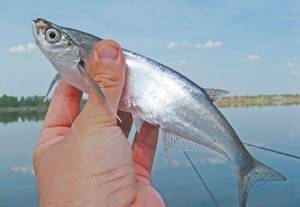
When herring spawning begins, the largest individuals swim in first. They are otherwise called “halls”.
The fish reach a length of about 50 cm and weigh up to 1.5 kg.
Many people catch small fish, which a good fisherman usually releases.
Therefore, the herring is becoming smaller and smaller in the markets.
But its best taste is created by fat, which is formed only in adult fish.
When going fishing, you should take with you several types of spinners weighing about 3g.
By changing the lures on your fishing rod, you can use experimentation to choose the best one for catching fish. Conduct small experiments, throwing gear into the water two or three times.
See which lure is most often used to bite or catch fish. Compare the number of bites and choose the spoon to which the herring responded best.
Fishing with a spinning rod is not as simple as it seems at first glance. Experienced fishermen do not always share their experience with beginners. There are some nuances that you need to know when fishing with a spinning rod. You need to be able to cast the spoon correctly and drive it, creating a semblance of the movement of a fish.
Casting a spoon from a boat is different from fishing on the shore using it. In a boat you fish in a sitting position. And on the shore, casting a spinner is done in a standing position. It is much easier to cast a lure from a boat than from the shore.
Best time to fish for herring
Herring is best caught during the spawning period. At this time, fishing is interesting and exciting, but, as a rule, it is prohibited, so it is better to wait until the end of fishing restrictions related to spawning. But by the end of summer the fish lose weight and there are no large specimens to boast of! Already from October to the end of November, it gains weight again, and you can catch it in larger sizes.
In May, it is best to catch herring with a spinning rod and fly. At this time she is active and dynamic.
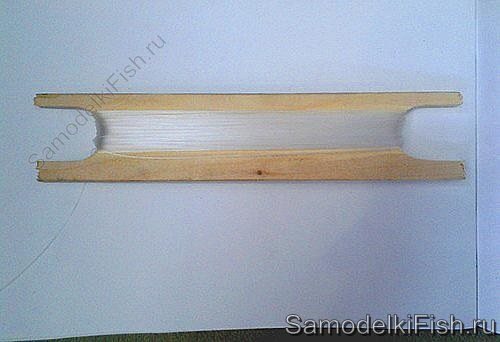
Herring is a tasty and commercial fish, which, if properly prepared, will look like an excellent dish on the table.
Fishing on the Volga River is interesting and exciting, exciting and dynamic. If you know all the nuances of herring fishing, then your fishing trip can result in a real trophy that you can show off to your friends.
What is the best way to catch herring?
As bait for herring, you can use bright, oscillating spoons with rotating mechanisms. They are elongated silver spoons, to which hooks number 7 - 9 are attached.
Another popular way of catching herring is to use a fatka or, as it is popularly called, a spider. You don't need to go far on a boat with it; you can use it on the shore. The depth of the reservoir should be at least a meter, but not more than one and a half meters.
You can use a spider to catch not only herring, but also other fish that spawn near the shores. Many fishermen, and especially those who live near bodies of water, use this type of gear. You don’t have to use bait, because the herring grabs everything during spawning.
Happy fishing!
Tackle for fishing 2-3 pieces at a time
What do we need
- Filly (wooden);
- Line 0.6 (50 meters);
- Elastic band, number 3 (5 meters);
- Nylon rope (150 cm);
- 5 hooks with a long shank (size 4);
- Cambric (white or yellow);
- Swivel (large);
- Line 0.4 (for leashes);
- Sinker (300-400 grams).
Without pulling the leashes out of the water, in short, they just tug. It goes without saying that when you feel a blow, you pull out the leashes and remove the herring. Instead of a sinker, you can use a brick or a piece of chain, since in most cases it is impossible to pull it out.
thekind (Ragimov K.S.) – Specially for Samodelki FISH, Astrakhan, Russia
Time and place of fishing
You can watch our other videos here.
Installation of a tyrant for herring
Another popular and catchy tackle for catching herring is the tyrant. A fishing rod equipped with a tyrant is used to catch fish from a boat at sea. The fisherman's task is to find a school of herring and give it the bait that it will take.
This fishing rod consists of a spinning rod up to 3 meters long and an inertia-free plastic reel. The spool capacity is 5000-6000. Why should the reel parts be plastic? Because sea water quickly damages metal parts. This has already been tested in practice.
A fishing line with a diameter of 0.4 to 0.8 mm is wound onto the reel. Another piece of fishing line 1.5 meters long is attached to the end of the fishing line through a carabiner. 5 leashes with hooks No. 6-8 are tied to it. The length of the leashes is 3-5 cm. A flat-shaped weight weighing from 50 to 150 grams is tied to the end of the fragment. The stronger the current, the heavier the weight we place.
